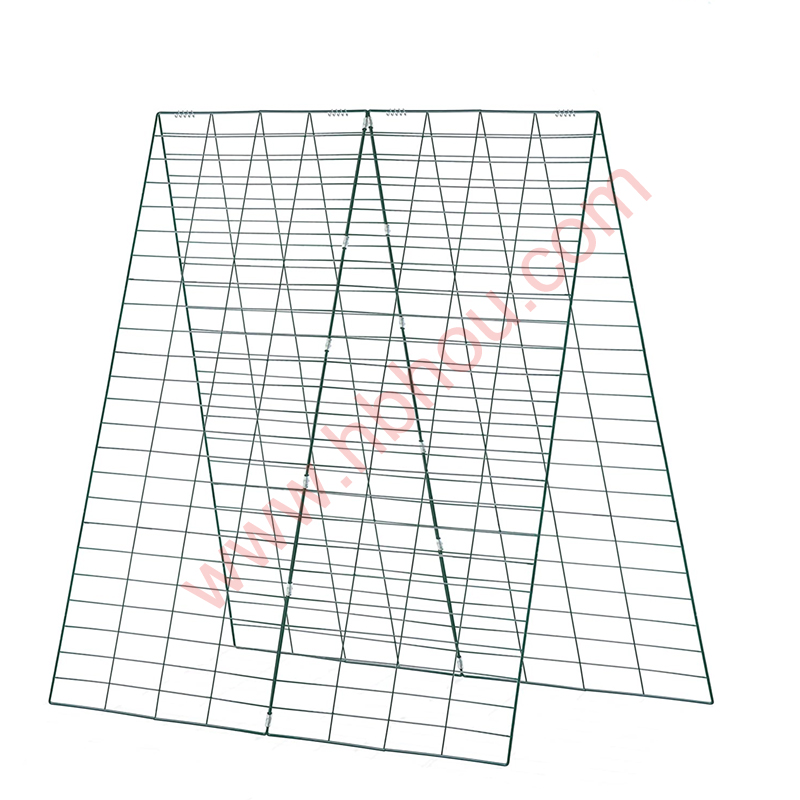The Utility and Versatility of Stainless Barbed Wire
Stainless barbed wire is a significant innovation in fencing and security technology, combining durability, strength, and resistance to corrosion. Its design, featuring sharp points or barbs spaced at regular intervals, is specifically engineered to deter intruders while containing livestock or securing property lines. This article will explore the characteristics, advantages, applications, and maintenance of stainless barbed wire, illuminating its role in modern fencing solutions.
Characteristics of Stainless Barbed Wire
Stainless barbed wire is made from high-quality stainless steel, which is known for its strength and resistance to rust and corrosion. This material is a combination of iron with chromium and often nickel, resulting in a wire that can withstand various environmental conditions without deteriorating. The production process involves tightly twisting wire strands to a desired diameter and then affixing barbs at intervals to increase its deterrent effect.
The typical gauge for stainless barbed wire ranges from 12.5 to 15, with a thicker gauge providing greater strength and resistance against cutting or tampering. The barbs can vary in distance and sharpness, depending on the intended purpose. This wire can also be manufactured in different coil sizes, making it adaptable to various fencing projects.
Advantages of Stainless Barbed Wire
One of the foremost advantages of stainless barbed wire is its longevity. Unlike traditional galvanized steel barbed wire, which may succumb to rust over time, stainless steel maintains its integrity and aesthetic appeal for years. This longevity reduces the need for frequent replacements or repairs, thus saving costs in the long run.
Moreover, stainless barbed wire is particularly effective in security applications. Its sharp barbs create a formidable barrier that is hard to breach, making it an ideal choice for high-security areas such as prisons, military bases, and industrial sites. Additionally, its visibility serves as a psychological deterrent, warning potential intruders of the risks involved in attempting to breach such barriers.
Another notable benefit is its versatility. Stainless barbed wire can be utilized in various settings, from agricultural farms where it helps contain livestock and protect crops from wild animals, to residential properties, and commercial buildings needing effective perimeter security. It can also be used in concert with other types of fencing, enhancing the overall security system.
stainless barbed wire

Applications of Stainless Barbed Wire
The applications of stainless barbed wire are extensive and diverse. In agriculture, it is used to create enclosures that prevent animals from escaping while also keeping predators at bay. This ensures the safety of livestock and supports effective management of agricultural lands.
In urban settings, stainless barbed wire is often employed in security fencing around commercial properties, warehouses, and construction sites. Its robust nature ensures that such facilities remain secure from theft and vandalism, protecting both material assets and sensitive information.
Additionally, stainless barbed wire is commonly used in military and government installations, where security is paramount. The wire is frequently installed in conjunction with other deterrents, such as surveillance systems and motion sensors, creating a multi-layered security approach that greatly minimizes risks.
Maintenance Considerations
Maintaining stainless barbed wire is relatively straightforward. Due to its corrosion-resistant properties, it requires less frequent upkeep compared to other fencing materials. Regular inspections are advisable to detect any signs of damage or weakening, particularly in high-traffic areas or regions subjected to extreme weather conditions.
Cleaning the wire to remove dirt, debris, and vegetation that may accumulate is also recommended, as this helps maintain its effectiveness and appearance. While stainless barbed wire is designed to withstand a variety of conditions, ensuring it remains clear of obstructions can enhance its longevity and functionality.
Conclusion
In conclusion, stainless barbed wire represents a key advancement in fencing and security technology. Its strength, durability, and resistance to corrosion make it a preferred choice for a wide array of applications. By providing effective barriers for both agricultural and security needs, stainless barbed wire continues to play a vital role in safeguarding properties and livestock. Whether used in rural or urban settings, its enduring presence underscores the importance of effective fencing solutions in our increasingly complex world.
















